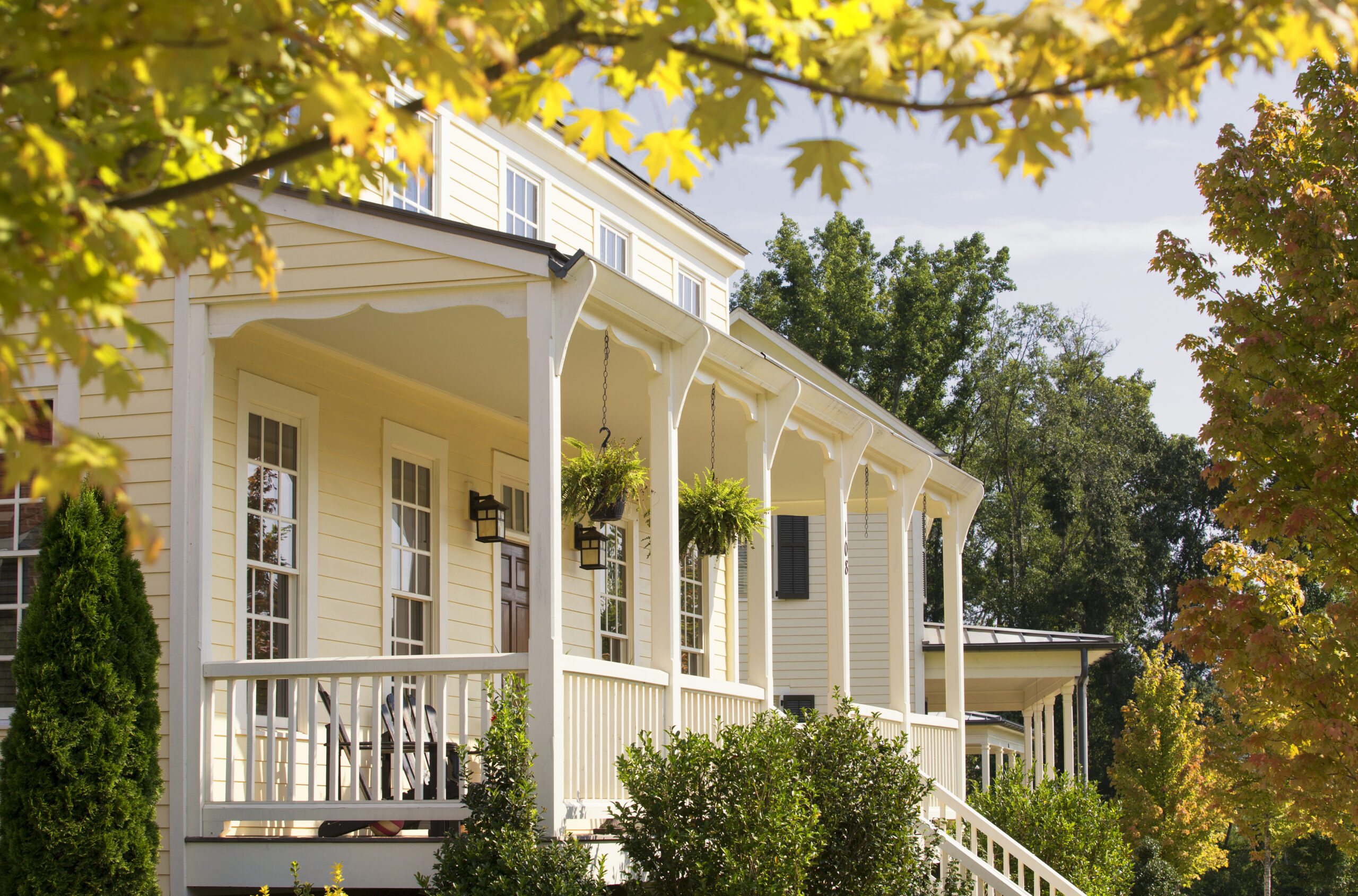
The History Of The Front Porch

Patrick Square is a community that celebrates the American front porch. Located in Clemson, South Carolina, these front porches play an important role in the neighborhood’s architectural and social fabric. Most of the homes in Patrick Square feature large front porches that encourage outdoor living and foster a sense of community among neighbors. They also provide a welcoming space for neighbors to gather, chat, and enjoy the beautiful Southern weather.
The front porch is an iconic feature of American homes, and it has a rich architectural history that has influenced the design of countless homes across the country. The porch’s popularity can be traced back to the mid-19th century, when it became a prominent feature of American architecture.

The early front porch designs were simple, consisting of a raised platform with steps leading up to the entrance. However, as the 19th century progressed, the front porch evolved into a larger and more decorative feature of American homes. People began using their front porches as outdoor living spaces, with wrought iron railings, turned posts, and gingerbread trim becoming popular decorative features.
“The front porch is an iconic feature of American homes, and it has a rich architectural history that has influenced the design of countless homes across the country.”
In the early 20th century, the front porch became even more ornate and decorative as people moved to urban areas and wanted to show off their social status. The Arts and Crafts movement brought it back to simpler, more practical designs, but the porch remained a prominent architectural feature of American homes.
During the 1920s and 1930s, the front porch became even more prominent as architects designed homes with wrap-around porches, which extended around the sides and back of the house. These porches were typically screened in, and they provided an ideal space for outdoor entertaining and relaxation.
The popularity of the front porch declined in the mid-20th century as air conditioning and TV led people to spend more time indoors. The front porch became a neglected space, and many homes had their porches enclosed or removed altogether.
Thankfully, the front porch is making a comeback in American architecture. Many modern home designs incorporate a front porch, and architects are experimenting with new porch designs that provide shade, privacy, and functional outdoor living spaces. The revival of the front porch is a testament to its enduring popularity as an architectural feature of American homes.
The front porch has played a significant role in American architectural history, evolving from a simple raised platform to a larger, more decorative feature of American homes. While the popularity of the front porch declined in the mid-20th century, its enduring appeal has led to a revival in modern home design. The front porch remains an iconic feature of American homes, and its architectural history continues to influence the design of homes across the country.

